
1973, meet 1984.
|
1969
1969 was the introduction year for the Competition. Available colors were Black or Bronze Green, with chromed Nervex Professonal lugs, fork ends and stays. Campagnolo 1010A dropouts were fitted as standard. All examples are fitted with Raleigh's anniversary headbadge. Componentry, as shown in the 1969 catalog:
Alternate componentry as found on stock examples:
Examples shown are only intended to be representative of original frames. Componentry is not necessarily original. |
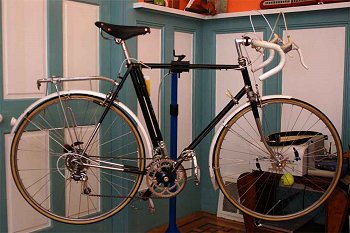 Black Raleigh Competition Photo courtesy Sciencemonster - BikeForums.net
|
|---|
1970-1972
An unknown series of events as late as 1972 resulted in two drastically unusual, short lived paint schemes. Neither made the 1970 catalog:
|
A. White w/blue panels.
Often refered to as a Competition masqurading as a Gran Sport, this scheme is absolutely identical to the latter. |
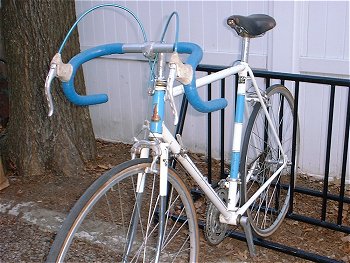 Photo courtesy Neal Lerner |
|---|---|
|
B. Purple w/blue panels.
This was a variant on the Gran Sport scheme, with purple as the main color, and periwinkle blue panels secondary. I don't know what they were thinking of when they did this. |
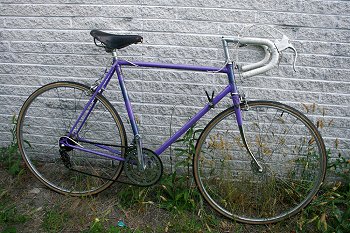 Photo courtesy GMS - BikeFourms.net |
Neither scheme lasted, and if it weren't for the ambiguous "A0000" serials so common on these machines, perhaps we'd know exactly what year this happened.
Dropouts on these models are generally Zeus or Campagnolo 1010A.
1972
As in '70, the Competition is stricken from the 1972 catalog. This doesn't mean a thing. The Competition reappears - to stay - in 1973, this time, wearing the black scheme that would become its trademark for the next 9 years.
1973
1973 Competitions adopt the new Raleigh decal kit, and - according to the '73 catalog - are fitted with Carlton's Capella lugset. This is the last year for the non-G.S. models to feature fully painted stays.
Huret drops throughout.
1974-1976
Competitions go back to Bocama Professional lugs, and gain the chrome rear triangle ends lost after the first-gen models. Huret drops remain.
1977-1982
1977 saw drastic changes - the Competition's geometry was revised, a Campagnolo Gran Sport group replaced the Weinmann/Huret mix, and Pearl Silver was added to paint
| Export models, such as the '80 example noted at right, were not marked as "G.S." models, and feature Carlton Cycle seat band decals in place of the Raleigh heron and crest. |
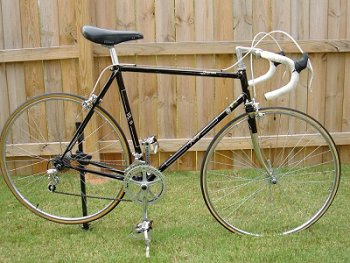 Photo courtesy m6hm - Flickr |
|---|
|
1986
Chrome ends, headtube, and fork dropped in favor of a periwinkle color unnervingly similar to the 1970/1 offering; fork now matches frame. Decals match secondary color with built-in fade. |
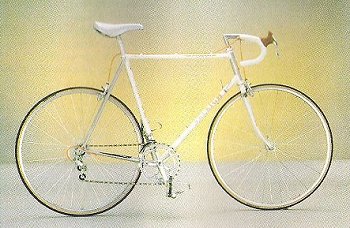 |
|---|
A note to those trying to ID their Grand Prix from the Raleigh catalogs:
Forget it. The catalogs lie worse than Raleigh's indecipherable serial numbers. Raleigh's components often changed on a whim, especially on the lower-end bikes such as the Grand Prix. As the Grand Prix was Raleigh's sales king in the economy 10-speed lineup, it could, did, can, and will be found with any either Simplex or Huret in '75 and '76, and I dare say that the oddities aren't limited to those components, nor those years. Most of them were spit out of the factory with Simplex. Ditto for fork blades - fork rake and bend location was dependent on what was kicking around in Raleigh's parts bin that day. The Competition and International models appear to be the absolute worst offenders in this respect, but the Grand Prix wasn't excluded from this club.










